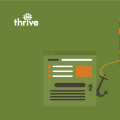Are you looking to maximize your on-page SEO with H1, H2 and H3 tags? If so, you’ve come to the right place! This article will provide a comprehensive guide to understanding how H1, H2 and H3 tags work to improve the structure of your page. We’ll cover how to use these tags correctly, the benefits they provide, and how to make sure that you’re taking full advantage of all their features. By the end, you’ll be an expert on how H1, H2 and H3 tags can supercharge your on-page SEO!Headings are an important aspect of SEO that should not be overlooked. They help search engine crawlers better understand the structure of the page and can be used to emphasize key points within the content.
When used correctly, headings can be a powerful tool in optimizing your website for search engine results. The most important heading tag is the H1 tag. This tag should be used only once per page and should include a keyword. It should also be placed at the top of the page, as this is the first thing that search engines will look for when crawling your website. A well-written H1 tag can make a huge difference in how your website is indexed by search engines. H2 tags are used to break up content into sections and should also include keywords.
This allows search engine crawlers to better understand the structure of the page and makes it easier for readers to find the information they are looking for. Examples of well-written H2 tags include titles such as “Benefits of Using H1, H2, and H3 Tags” or “How to Optimize Your Website with Headings”.H3 tags are used to further break up content into subsections and should also include keywords. For example, an H2 tag might be “The Benefits of Using Headings” and an H3 tag might be “Increased Visibility in Search Results” or “Improved Readability”. Examples of well-written H3 tags include titles such as “How to Write Effective Headings” or “Tips for Optimizing Your Website with Headings”.Using headings correctly is essential for maximizing your on-page SEO.
By following these guidelines, you can ensure that your website is properly indexed by search engines and that readers can easily find the information they are looking for.
Using Keywords in Headers
Including keywords in headings is an important part of maximizing on-page SEO. Keywords in the headers help search engine crawlers better understand the content on a page and can lead to improved search engine rankings. When keywords are included in the headers, it gives context to the content on the page and can help to make it more relevant for search engine queries.For example, if a page contains content about “dogs” but does not include the keyword “dogs” in any of the headings, then search engine crawlers may not be able to accurately interpret the relevance of that page for searches related to “dogs”. As a result, that page may not be optimized for search engine rankings. To maximize on-page SEO, it is important to include keywords in headers whenever possible.}
Optimizing Headers for Readability
Headers are one of the most important elements of on-page SEO. They help search engine crawlers easily understand what a page is about and can also improve the readability of your website for users.Structuring headers correctly makes it easier for readers to navigate and comprehend the content on a page. When optimizing headers, it is important to use the correct HTML tags, such as H1, H2, and H3 tags, to create a hierarchical structure. These tags are used to create headings and subheadings, which are essential for breaking up content into logical sections and improving readability. Using H1 tags for main headings, H2 tags for subheadings, and H3 tags for further subsections helps readers quickly scan through the page and find the information they are looking for. This structure also makes it easier for search engine crawlers to identify what each section is about. On the other hand, poorly written headers can lead to a page that may not be optimized for search engine rankings.
Poorly written headers can be confusing and difficult to read, which can cause users to leave the page quickly. Search engines also take into account how long visitors stay on a page when determining its ranking. In conclusion, it is important to optimize headers for readability in order to maximize on-page SEO. Structured headers can help readers better understand the content on a page, while poorly written headers can lead to a page that may not be optimized for search engine rankings.
Using the Right Number of Headers
Headers are an integral part of on-page SEO, as they help to structure the content on a webpage and make it easier for search engine crawlers to understand.It is important to use the right number of headers, as too many can lead to a cluttered page and too few can lead to a page that may not be optimized for search engine rankings. Using too many headers can lead to a page that looks cluttered and disorganized, which makes it difficult for search engine crawlers to understand. Additionally, having too many headers on a page can make it difficult for users to find what they are looking for. To avoid this problem, it is important to use the right number of headers that accurately reflect the content of the page.
On the other hand, using too few headers can also lead to a page that is not optimized for search engine rankings. By not breaking up the content into multiple sections with headers, search engine crawlers may have difficulty understanding the content on the page. Furthermore, without headers, it is difficult for users to navigate around the page and find what they are looking for. In order to maximize on-page SEO, it is important to use the right number of headers that accurately reflect the content of the page.
This will make it easier for search engine crawlers to understand the content and also make it easier for users to find what they are looking for.}Using H1, H2, and H3 tags correctly is essential for optimizing on-page SEO. Using the right number and type of headers can help both readers and search engines better understand the structure and content of a page. It is also important to include relevant keywords in headers to maximize on-page SEO. By taking the time to properly structure the HTML code, website owners can significantly improve their chances of getting higher search engine rankings.






